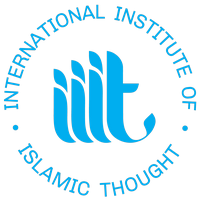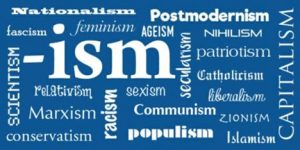DISENTANGLING MUDDLED TERMINOLOGY

Four hundred years ago, Francis Bacon, philosopher, statesman, essayist, and champion of empiricism and scientific methodology, appealed for a radical move away from the scholastic tradition imprisoned by arguments and reliance on authority. To do so, he says, we must reconnect knowledge with action for “the use and benefit of man” by purging the mind of prejudice, conditioning, false notions, and unquestioned authority – those fixations which he called the “idols of the human mind” and which distort and discolor the true nature of things – and rely instead on direct experience, perception, observation, and “true induction” as methods of gaining sound knowledge. Amongst the more specific examples of hindrances to understanding included in Bacon’s “idols” are: trying to make things fit into patterns, seeking evidence to support preconceived notions, seeing what one expects to see, believing what one wants to believe, generalizing, favoring one outlook or perspective over another (e.g., antiquity over novelty, the part over the whole, differences over similarities, or vice versa), and failing to understand that words may have more than one meaning. This is a remarkable list which has such a modern ring to it, converging as it does so strikingly with many of the key modern findings in cognitive psychology and related disciplines about the nature of conditioning, prejudice, confirmation bias, and other impediments to learning.
While all Bacon’s revolutionary psychological, philosophical, scientific, and linguistic insights have much to tell us, we might select from his list of “idols” those that are directly relevant to our undertaking to create a lexicon or glossary that can begin to promote some clarity in the definition of key terms. These are the “Idols of the Marketplace” (idola fori), described by Bacon in Novum Organum (1620) as “the most troublesome of all,” and which, he says, “have crept into the understanding through the alliances of words and names. For men believe that their reason governs words; but it is also true that words react on the understanding; and this it is that has rendered philosophy and the sciences sophistical and inactive.” Here, Bacon explodes the popular belief or myth that thoughts are formed into words in order to communicate ideas and opinions to others, pointing out that words actually often arise as substitutes for thoughts. Although “learned men” were normally careful about definitions and explanations, setting the matter right “in some things,” it was also the case that “words plainly force and overrule the understanding, and throw all into confusion, and lead men away into numberless empty controversies and idle fancies.” We may be reminded here of Al-Niffarī’s depiction of “the letter” as a tool of endless proliferation and conjecture, calling our attention away from Divine Unity (tawḥīd).
We can already see very clearly Bacon’s anticipation of the modern science of semantics, but also one of the foundational concepts of critical discourse analysis within the wider field of cultural studies – the way that text itself is instrumental in creating and sustaining power relationships. His elaboration of the confusion caused by words is worth quoting in full:
Now words, being commonly framed and applied according to the capacity of the vulgar, follow those lines of division which are most obvious to the vulgar understanding. And whenever an understanding of greater acuteness or a more diligent observation would alter those lines to suit the true divisions of nature, words stand in the way and resist the change. Whence it comes to pass that the high and formal discussions of learned men end oftentimes in disputes about words and names; with which (according to the use and wisdom of the mathematicians) it would be more prudent to begin, and so by means of definitions reduce them to order.
In other words, understanding is not only hindered by the common (i.e., “vulgar”) definitions of words but also (even among the more learned) by disputes over their multiple meanings. This confusion and ambiguity is even more marked in today’s increasingly complex world, as Ziauddin Sardar rightly points out: “The more complex society becomes, the more specialized contexts it develops. Complexity means different, even contradictory, meanings of words can continue to exist side by side or be used by different groups simultaneously. As new meanings and implications of language are being developed, there is no inflexible law decreeing that old implications, associations, or evocative import disappear.” To disentangle this muddle and set a navigable course which can begin to meet our objectives, we need, as Sardar recommends, to start from the guiding premise that “language is the basic tool through which we learn, teach, adapt to change, and advance knowledge. It is an inseparable part of how we articulate our worldview, how we conceive ourselves as individuals and societies, shape our perceptions of the world around us, and engage with the world to change it.” We therefore need to define a set of key terms “in our own specific way, give them a contemporary meaning, and incorporate them within the Integration of Knowledge discourse. What, for example, do we mean by freedom, human rights, democracy, secularism, and so on? What is the contemporary relevance of Islamic terms like khalīfah, shūrā, ijmāʿ, istiṣlāḥ, or iḥsān?”
It is important to emphasize at this point that the intention to define words “in our own specific way” does not entail a blinkered disregard or dismissal of the way in which they might be defined by others. As Ibn Rushd argued, there exists a continuum of different views on a particular issue, and a variety of language available to describe it. Equivocation in language, he upheld, is not something to be challenged or deplored; rather, it is to be accepted and respected as a natural feature of our lives as diverse people living in a community with a wide range of ends and purposes. Throughout his philosophy, Ibn Rushd tried to show how it is possible for one thing to be described in a variety of ways, and how apparently contradictory views can be reconciled if one sees them all as different aspects of one thing. This message of unity in diversity is precisely the message of Rumi’s story of the Travellers and the Grapes to which I referred earlier. Umberto Eco refers to Ivanov’s point that “each language constitutes a certain model of the universe, a semiotic system of understanding the world, and if we have 4,000 different ways to describe the world, this makes us rich.”
Awareness of polysemy (multiple meanings) need not, however, be opposed to the “rebalancing” process by which we seek to find semantic orientation in the contemporary context to fulfil our own purposes and objectives.
This article is an excerpt from: Ziauddin Sardar & Jeremy Henzell-Thomas, Rethinking Reform in Higher Education (London/Washington: IIIT, 2017), pp. 186-9.
The views expressed in this article are those of the author and do not necessarily reflect the views of the International Institute of Islamic Thought (IIIT).




